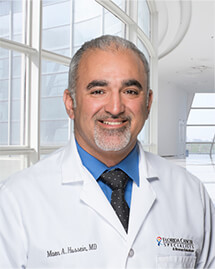Author(s): John V. Heymach, M.D., Ph.D.1; Gerrina Ruiter, M.D., Ph.D.2,3; Myung-Ju Ahn, M.D.4; Nicolas Girard, M.D., Ph.D.5,6; Egbert F. Smit, M.D., Ph.D.3,7; David Planchard, M.D., Ph.D.8,9; Yi-Long Wu, M.D.10; Byoung Chul Cho, M.D., Ph.D.11; Noboru Yamamoto, M.D., Ph.D.12; Joshua K. Sabari, M.D.13; Yanqiu Zhao, M.D.14; Hai-Yan Tu, M.D.10; Kiyotaka Yoh, M.D.15; Ernest Nadal, M.D., Ph.D.16; Behbood Sadrolhefazi, M.D.17; Maren Rohrbacher, M.D., Ph.D.18; Ute von Wangenheim, Ph.D.19; Sabina Eigenbrod-Giese, M.D., Ph.D.18; Jon Zugazagoitia, M.D., Ph.D.20; for the Beamion LUNG-1 Investigators;
Author Affiliations
1Department of Thoracic/Head and Neck Medical Oncology, University of Texas M.D. Anderson Cancer Center, Houston; 2Department of Clinical Pharmacology, Netherlands Cancer Institute, Amsterdam; 3Department of Thoracic Oncology, Netherlands Cancer Institute, Amsterdam; 4Department of Hematology and Oncology, Samsung Medical Center, Sungkyunkwan University School of Medicine, Seoul, South Korea; 5Institut Curie, Institut du Thorax Curie-Montsouris, Paris; 6Paris-Saclay University, Université de Versailles Saint-Quentin-en-Yvelines, Versailles, France; 7Department of Pulmonary Diseases, Leiden University Medical Center, Leiden, the Netherlands; 8Department of Medical Oncology, Institut Gustave Roussy, Thoracic Group and International Center for Thoracic Cancers, Villejuif, France; 9Faculty of Medicine, Paris-Saclay University, Paris; 10Guangdong Lung Cancer Institute, Guangdong Provincial People’s Hospital (Guangdong Academy of Medical Sciences), Southern Medical University, Guangzhou, China; 11Division of Medical Oncology, Yonsei Cancer Center, Yonsei University College of Medicine, Seoul, South Korea; 12Department of Experimental Therapeutics, National Cancer Center Hospital, Tokyo; 13Division of Medical Oncology, Perlmutter Cancer Center, New York University Langone Health, New York; 14Department of Medical Oncology, the Affiliated Cancer Hospital of Zhengzhou University and Henan Cancer Hospital, Zhengzhou, China; 15Department of Thoracic Oncology, National Cancer Center Hospital East, Kashiwa, Japan; 16Thoracic Tumors Unit, Medical Oncology, Catalan Institute of Oncology, Bellvitge Biomedical Research institute, L’Hospitalet, Barcelona; 17Boehringer Ingelheim Pharmaceuticals, Ridgefield, CT; 18Boehringer Ingelheim International, Ingelheim am Rhein, Germany; 19Boehringer Ingelheim Pharma, Biberach an der Riss, Germany; 20Department of Medical Oncology, 12 de Octubre Hospital, Madrid;
